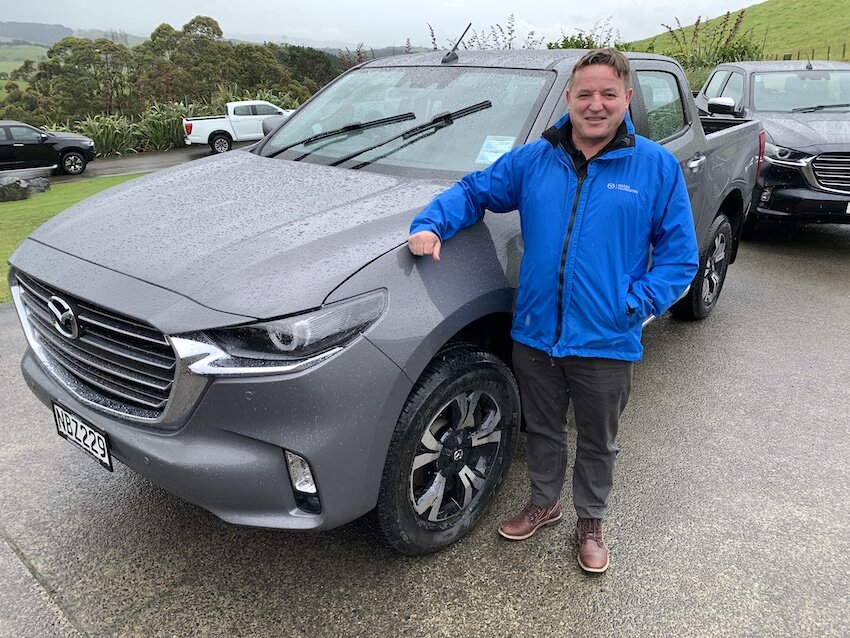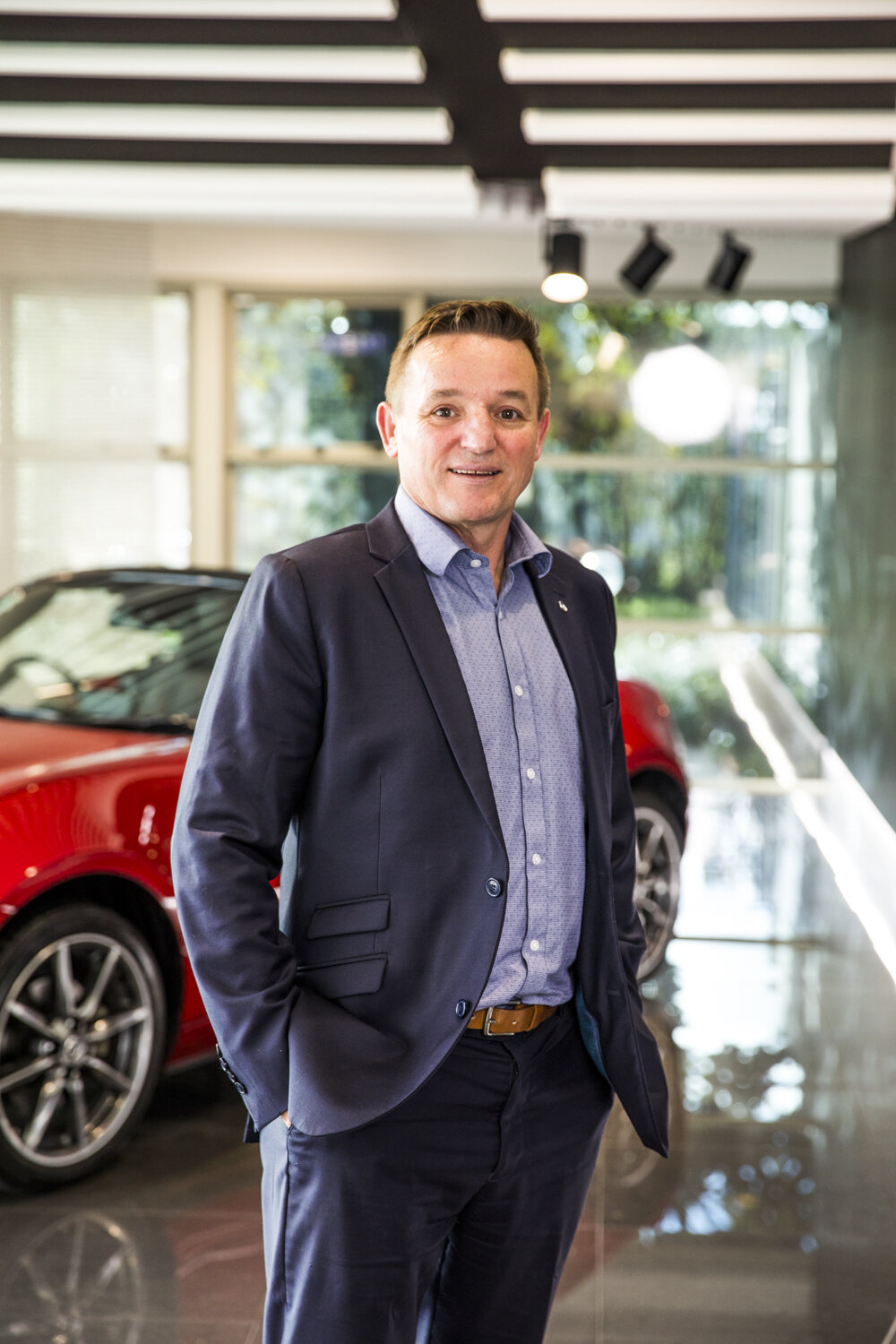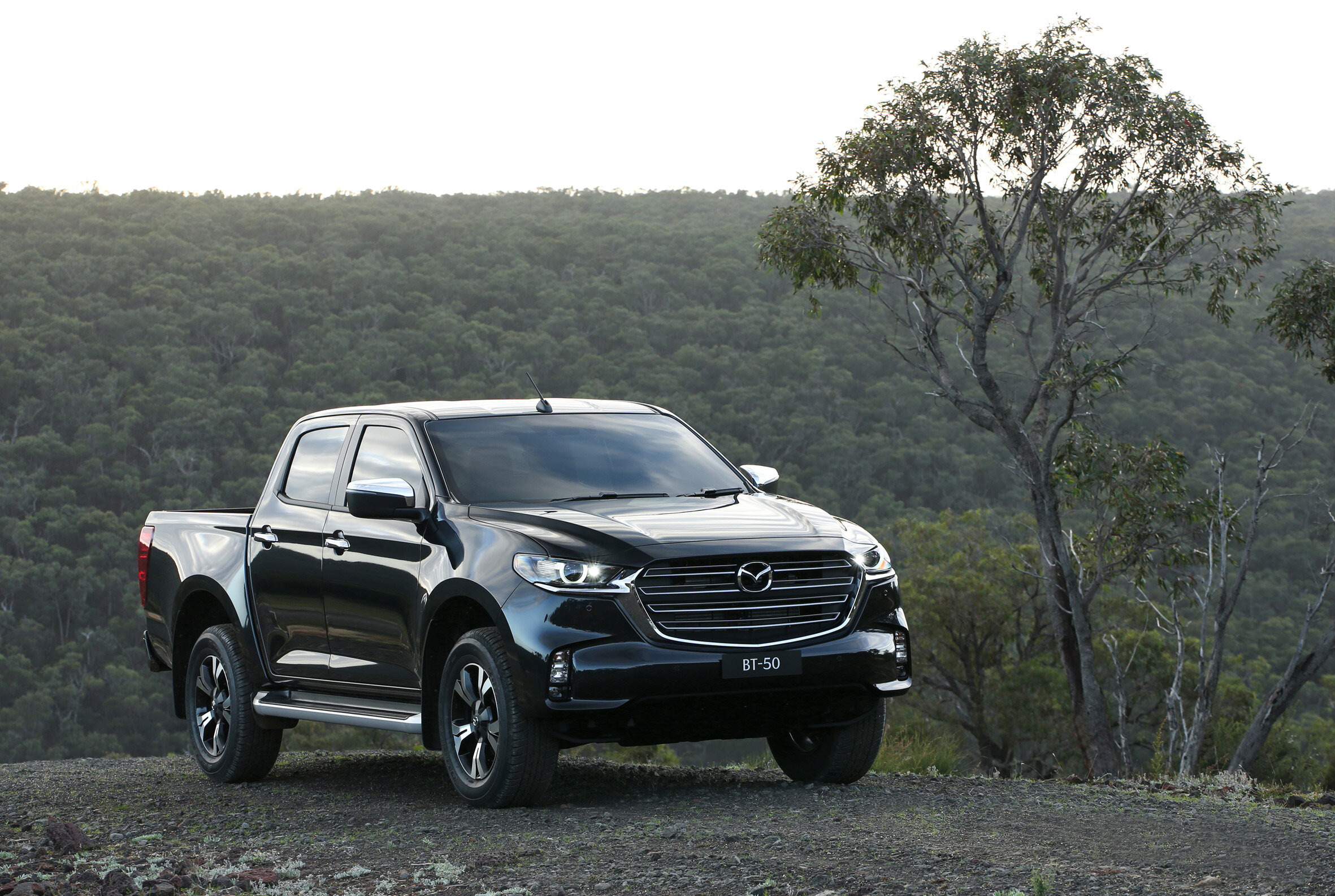Ute territory too tough for Mazda NZ - BT-50 dropped
/National distributor has consistently had a ute in play since the mid-1960s’ - but it’s all over now.
Read MoreNational distributor has consistently had a ute in play since the mid-1960s’ - but it’s all over now.
Read MoreTrad open-top manual sole recipient of full dynamic refinements.
Read MoreOptional 1.9 carries lighter Clean Car penalty and brings down price but also ties to rear-drive and knocks 500kg off towing capability.
Read MoreMazda adds luxury elements to workhorse ute
Read MoreWhile our neighbour is securing CX-60 this year, NZ is further down the queue.
Read MoreBEING in the business of making and selling products that create greenhouse gases responsible for global climate change also fuels Mazda’s eco-consciousness.
It all began in 2007 with Sustainable Zoom-Zoom, a multi-solution plan to reduce vehicle emissions; including a key resolution to reduce “well to wheel” CO2 emissions from its vehicles by 50 percent by 2030 and by 90 percent by 2050.
Read More
NOW there are two – derivatives of Mazda’s top-selling CX-5 sports utility, that is, with a fiery turbocharged 2.5-litre petrol engine.
One outcome of a mild refresh of the model line is that the 170kW and 420Nm SkyActiv-G 2.5T that has previously restricted to the flagship $61,795 Takami is now also under the bonnet of a new introduction to the family.
At $58,995, the SP25T is effectively a Takami that presents with a bit less plush – so, no leather or sunroof - than the top dog and a slightly sportier ambience, the pair being mechanically identical and both delivering a maker-cited 0-100kmh time of 7.7 seconds.
The engine’s outputs are 30kW/168Nm more than the naturally aspirated 2.5-litre petrol engine offered in mid-spec models.
Mazda NZ says a feature of the SP25T trim is a blackout theme – appropriate, the brand feels, in a country where the national sporting colour is black.
The exterior elements include black metallic alloy wheels and piano black exterior mirrors, while the interior gets black deluxe leatherette/suede seat trim along with a black decoration panel. To set off the black, red stitching has been added to seats and steering wheel.
David Hodge, Mazda NZ managing director, believes the SP25T grade will add to the CX-5s’ solid reputation.
“With the blackout features it will appeal to New Zealand motorists who want all the great features of the CX-5 but in a sportier package. It will certainly make a statement on the road.”
Other changes to the CX-5 line up include the addition of privacy glass to GSX models and turbo badging on the SP25T and Takami grades. All models now feature wireless Apple CarPlay as well as Android Auto, though via USB.
One revision that has appeared overseas will not get here until year-end. That’s the adoption, in high-end models, of a 10.5 inch Mazda Connect infotainment display. For the interim, the upgrade cars will maintain the previous line’s 8.0-inch interface.
The enhanced screen has been on US-market CX-5 models since last August and has a faster processor.

DETERMINATION to align the BT-50 more naturally with its passenger models was a reason Mazda NZ gave when successfully winning head office approval to site the one-tonner into a price zone that has proven significantly different to that occupied by its Isuzu doppelganger.
That impetus also explains why the Auckland-centre distributor has bypassed worksite-biased variants in the D-Max family and focused purely on double cab automatics wellsides, in three rear-drives and three four-wheel-drives, formatting in GSX, GTX and Limited.
The BT-50 rear-drives placing respectively at $47,490 GSX, $51,490 and $53,990, with the four-wheel-drive versions adding an additional $7000, leaves them undercutting their Isuzu equivalents, most obviously at flagship level, where the Limited 4x4 sites $14,500 below the top D-Max X-Terrain. The latter has additional body styling enhancements that, when added to the BT-50, do not reduce the gap significantly.
Isuzu Utes New Zealand, which released its range a month before the BT-50 launch yesterday, has been asked to share its thoughts about Mazda NZ’s strategy, but has not responded.
While BT-50’s pricing also leaves it looking good against the category-dominating Ford Ranger and Toyota Hilux, it’s the situation that exists between it and the D-Max that is most likely to create chat as the models are essentially one and the same under different skins.
Identical chassis, drivetrain, closely linked for bulk interior architecture and built in the same factory in Thailand, on a common line. Mazda was able to implement its own exterior styling, so few panels are shared, and had responsibility for the cabin’s look, but the ute is primarily enough of an Isuzu project for Mazda NZ to refer to their brand as being a customer.
David Hodge (pictured), Mazda NZ managing director, said he could not speak to how Isuzu chose to market the D-Max, but confirmed that BT-50 negotiations were conducted solely with Mazda HQ in Hiroshima, took more than a year and were based on persuading that aligning the BT-50 as not only a workhorse but also a lifestyle alternate to the CX-designated sports utilities would bring growth.
The caveat from persuading Japan to give the green light is that the big factor that has driven the ute market, willingness to discount, will be absent from the sales process for this one.

“Traditionally the (ute) segment has been about a high recommended retail and a high discount, and it’s been that way for a very long time,” Hodge says.
“I think most retail buyers have not had to pay the full RRP for a long time and, if they were, they were probably paying too much.
“With passenger cars, certainly Mazda passenger cars, we’ve tried to make our pricing more transparent, and having our retail price close to what the transaction price is. We’ve now followed that example with the BT-50.
“We don’t expect there will be discounts, but we think … we will have no problem selling it to buyers wanting to pay the price we ask. We think it is a fair price and still offers bloody good value for money.”
They’re not outright selling the BT-50 as a car, or even a straight out car alternate, but the intent is to sell it in the same way they would a passenger vehicle.
Says Hodge about the type: “It was once pretty much solely the vehicle for farmers, tradies and those in the construction industry.
“While they are still a very important buying segment … we wanted to create a truck that was equally capable of being a tough workhorse and also doing the business of transporting the family in comfort to outdoor leisure activities.
“A design that shines equally in all situations, all the way from rough off-road settings to passenger car-like comfort for active weekend life-stylers and families.”
Mazda NZ is confident a fresh step of now including the BT-50 in the Mazda Car programme that has previously been for passenger models, will pay dividend. The old model was subject to a less generous process than now. Buyers of the new benefit from the same cover that has been provisioned the make’s cars: So five years, 150,000km factory warranty and a fixed priced servicing programme, also over five years, in which any scheduled workshop time will never cost more than $250.

That servicing cost cap is a big driver for building trust, Hodge says. “Some of these services can be really, really expensive. If a customer feels they are being looked after by a dealership then they are more likely to want to stay with a brand.”
There’s a third identified strength with the latest model: It’s improved safety. Hodge says it is “as safe, if not safer, than any other new car on sale today.”
As much as Mazda NZ anticipates growth, and has established sales targets, it has no intent of making these public. The outgoing BT-50 was generally languishing at fifth on the annual ute sales roster, but with the new model offering so much more, and with the Holden Colorado – which usually held at third place behind Hiliux and Ranger even after its maker announced in February it was departing from the market – now out of the picture, it’s clear every lower-placed performer will see opportunity to move up.
Hodge doesn’t disagree, but he and product and sales planning manasger Tim Nalden say BT-50’s success will not be measured by chasing share; it’s more about customer satisfaction.
“We’ll just accept where the market puts us,” says Hodge. “WE have a really successful passenger range, so we’re not heavily reliant on the BT-50. It sits alongside our passenger range as an extra vehicle, so we have a complete range. It’s not our do-or-die model.
“We’re pretty confident we are going to do alright with our truck, but the volume is what the volume will be. We will have limited amounts that we can get from the factory. It’s not a tap we can turn on quickly. We can increase volume, but it will take a while.”
In respect to this, Mazda NZ has still not had clarity from Japan about the plant’s operational status, which has been in question since Isuzu announced that production has curtailed, and might not restart until February, due to a Germany-based supplier of a vital part having been closed by Covid-19. Isuzu has intimated the vehicle cannot be built without a component only that supplier can provide. So it has closed the factory.
Well, apparently. Hodge says as far as Mazda NZ is concerned, the BT-50 is still in production until it is emphatically advised otherwise.
“I cannot talk for Isuzu but everything we have been told is that our December production is firm. We have not heard anything about our January production but we will assume, until we hear otherwise, that this is also unaffected.”


david Hodge: Mazda is in good shape to weather tough conditions.
NEW passenger and commercial vehicle sales in 2020 will likely be down 20 percent over last year, a drop of almost 31,000 registrations.
This assessment is from Mazda New Zealand’s boss, who holds that crunch time is coming.
If David Hodge’s prediction for this degree of calendar year-on-year decline is realised, it will represent the biggest drop since 2009, when new car sales plummeted 28 percent as the local economy tanked amid the global financial crisis.
Last year’s accrual of 154,479 new passenger and light commercial vehicles was already a decline, being 4.3 percent off the 2018 tally.
Regardless that the last three months has seemed rosy for registrations, the market year to date was down 24 percent at the end of August, Hodge notes.
It will remain tough though he also contends his own brand is in good shape, all things considered, to weather what’s ahead.
For one, he says, his make has steered clear of an emerging national stock shortage scenario of concern to the distributors’ representative body, the Motor Industry Association.
In respect to the surge in registrations over the past three months that has hastened the depletion of the national new vehicle stock pile to apparent verge of exhaustion, Hodge reminds that some of this is down to orders from April and May – when the industry was frozen by the national lockdown - coming to fruition.

The BT-50 is Mazda’s next new model here and is considered a crucial vehicle.
He respects the MIA’s reasons for offering a view about the increasingly parlous state of stock availability, and doesn’t absolutely question the accuracy of figures being bandied, but says it isn’t representative of his own brand’s status.
According to the association, new vehicle distributors normally carry up to 100 days’ stock for vehicles and large parts, but this has reduced by around 50 percent, to just over 11,000 units – the lowest in at least eight years and half the tally held in April. The situation for commercial models is said to be worse, that stockpile have quartered to under 5000 vehicles by the end of last month.
“Maybe 100 days is right as an industry average, but it’s not our situation. We have a shorter pipeline (for stock) against, for instance, the European brands.
“We are comfortable with our stock levels. We are lean, yes, but our stock pipeline is full, absolutely chocka.
“We have no problem at all with the number of vehicles coming to us.”
He wondered if Mazda had advantage over many other makes, or at least those unable to source from Japan, where production was virtually back to normal, or as close as it could be with working conditions being adjusted for coronavirus safety measures.
Mazda NZ takes cars from two plants in Japan and the BT-50 is from Thailand.
“Our plants are as close to 100 percent as is possible. The Japanese plants lost a shift the other day because of a typhoon, but other than that they are at full shifts.”

Hodge says Mazda production been relatively unaffected by coronavirus so the supply pipeline is full.
The commercial sector is now of high interest to Mazda NZ, as it plans a November release for the new-generation BT-50, by and large a doppelganger for the Isuzu D-Max that goes on sale on October.
That model comes from the Isuzu plant in Thailand where, Hodge says, the impact of Covid-19 has not been huge. Also, the local workforce was in good readiness.
“They are accustomed to wearing masks, so that wasn’t unnatural for them, and they (Thai people) are not hand-shakers, so there’s another factor that probably makes them safer.
“I think the Thai plant did shut down for a while but that was demand-driven, not health-driven.”
Hodge says the country going into lockdown in April was a stress for the motor industry and enforced that the car business at distributor level was essentially a “big money go round, money in, money out.
The ‘money’ in suddenly curtailed “and it was a hard stop. But the money out kept happening as we still had a pipeline of cars and a commitment to the plant for vehicles we ordered and had to pay for.
“It was an issue of liquidity and we worked hard with local banks here. We had strong backing relationships and that’s what saw us through that initial shock.”
After that, it was a waiting game. “We carried on work from home and though we didn’t sell anything we had a launch (the CX-30) at that time.” It also maintained a parts supply, initially to emergency services but gradually to the general public as shutdown conditions eased.
“Once we got out of Level Three, then to Level Two it was rally business as usual and when we got to One it was ‘yay, everything is back to the way it was.’
“But during April and mos of May the industry basically stopped. It didn’t go in a decline or anything, it was a hard stop. Same for the entire economy.”
The tourism, aviation and hospitality sectors had a “bloody good stomp” and were still quite sore, still, he suggested, “but the rst of the economy basically has largely carried on.”
The apparent rush in new vehicle sales in June, July and August was more perceived that actual, he suggested. The April and May activity also had influence.
“A lot of the sales in June, July and August were people who were going to buy in April and May. That has just helped top up those months.”
MotoringNZ reviews new cars and keeps readers up-to-date with the latest developments on the auto industry. All the major brands are represented. The site is owned and edited by New Zealand motoring journalist Richard Bosselman.